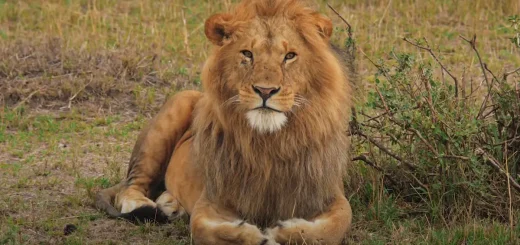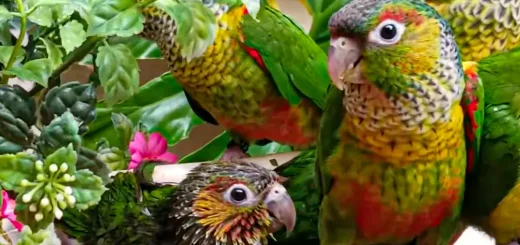Sun Conure Bird Species Bird

Description of the Sun Conure
Brightly colorful, cute, friendly, and loaded with personality, sun conure companions have long been popular with the family of birds. But owners need to be prepared the loudest of all medium-sized parrots.
Common names
The sun conure is also known as the sun parakeet.
Scientific name
The name to do for sun grapes is Aratinga solstitialis.
Origin and History
Sunrise North America North American natives, including Venezuela, northern Brazil, and Guyana. Found mostly in indoor tropical habitats, dry savanna woodlands, and coastal forests can also be found in the sun. They usually live in fruiting trees and pump groves.
This magnificent bird is currently endangered, causing a rapid decline in population and the number of people trapped for the pet trade. Although imports were banned in the United States in 1992, imports are stuck around 800, 000 per year and imports were banned in 2007 in European Union countries. Buyers are advised to certify their purchased birds as prisoners.
Volume
The sun conure is a medium-sized parrot; Mature birds are 12 inches in length, from the back to the tip of the tail. On average, they weigh about four ounces.
Average lifespan
In captivity, the sunrise can easily survive 25 to 30 years.
The mood
Sun Finger is a sporty, fun bird that enjoys athletic tricks. In general, it is a very affectionate and even crazy bird that makes all family members feel gentle if they treat it well. It is easily training. The birds are not without emotion, though; If it’s agitated, it can suddenly turn aggressive.
The sun conure extremely loud, capable of emitting ear-wailing screams. In the wild, these calls are used to communicate with other birds miles away; In captivity, it could get a return call from angry neighbors. This is not a bird for apartment or condo residents. Elves are not shy birds and you have to let them know if their needs are not met. The loud trumpet call is used to draw attention to important situations, and many birds have become known as excellent “watchmen”.
Sun conure colors and markings
At maturity, a sunrise is bright orange and yellow bird with traces of green and blue. The sun’s angles in adolescence are not nearly as colorful as those of adults — it is a natural immune system. The first feathers are olive green in color, changing to a yellow-orange mixture at about six months of age. The full-color plumber can be seen at about one year of age. The sun conures to have black beaks and feet and characteristic white patches around each eye.
Caring for Sun Conor
Sun grapes are an active bird that will be happy in a wide enclosure; To give it a cage 20-by-20 inches at the foot with a height of at least 36 inches. The cage has a fairly narrow bar spacing (3/4 to one inch) to prevent the bird’s head from sticking.
A game gym on the cage is ideal, as it is an athletic bird that loves to create its own tricks. Sunrise is less fantasy about bathing than some pots, but the cage will splash and bathe daily if there is a bowl of clear water every day. Some other parrots do not want to do as the Congress spray rain.
Like all other primitive species, searching for sun grapes requires a safe haven beyond search. Like all parrots, sunrises are social birds that need a lot of interaction with their human owners in order to be happy. Sunrise is naturally intriguing and affectionate when it attracts attention, it is especially suitable for those who want to bird for unmarried music.
Like most pet birds, training for sun tunes is essential if you want to have a positive and fun relationship with them. Positive reinforcement strategies can be used to train this paradigm in so many ways; Birds will not respond to any kind of scolding or negatively integrated. The voice of the sun is not known as a speaker, but some birds show remarkable ability to emulate other types of sounds, such as doorbells, microwave buzzers, and telephone chimes.
Feeding the sun elbow
In the wild, sunrises mainly sacrifice fruits, nuts, and seeds, but in captivity, they work best on a balanced diet. This companion parrot thrives on a cereal that includes a blend of basic parrots supplemented with fresh vegetables such as leafy greens and bread vegetables. The slightly desirable sweet potato is a wonderful meal for your pet. Like other companion birds, the sun appreciates grapefruit needs and treatment, so be sure to eat what your bird likes, but make sure they are a healthy choice. If you would like to feed your new partner easier, make a grain bake. And nuts are always a treat-good choice for walnuts and nuts are excellent choices. And don’t forget the occasional offering of fruit.
Exercise
As with all birds, proper exercise is essential for good health. Sun conures are very active by nature and need to provide adequate space to fly, explore, and play. Remember, your sun should be allowed to go out of the cage every day. Forging and other forms of enrichment are essential for these cute birds, so be sure to provide them with a variety of interesting toys and change them at regular intervals to keep your pet from worrying.
General health problems
Like other Conor and beast, sun conquer feathers may be prone to picking. Although this may be due to medical reasons, it is often a sign that the bird is disturbe or does not receive attention.
Conventional Proventricular Dilatation Disease (PDD), Cytosine Beck and Feather Disease, Cytosis Bacterial Infection, Beck Mocculation, and Aspergillosis Fungal Infection. An avian veterinarian has to perform regular checkups to catch this problem in the early stages.
More pet bird species and more research.
African Grey Parrot
Thanks For Visit.








